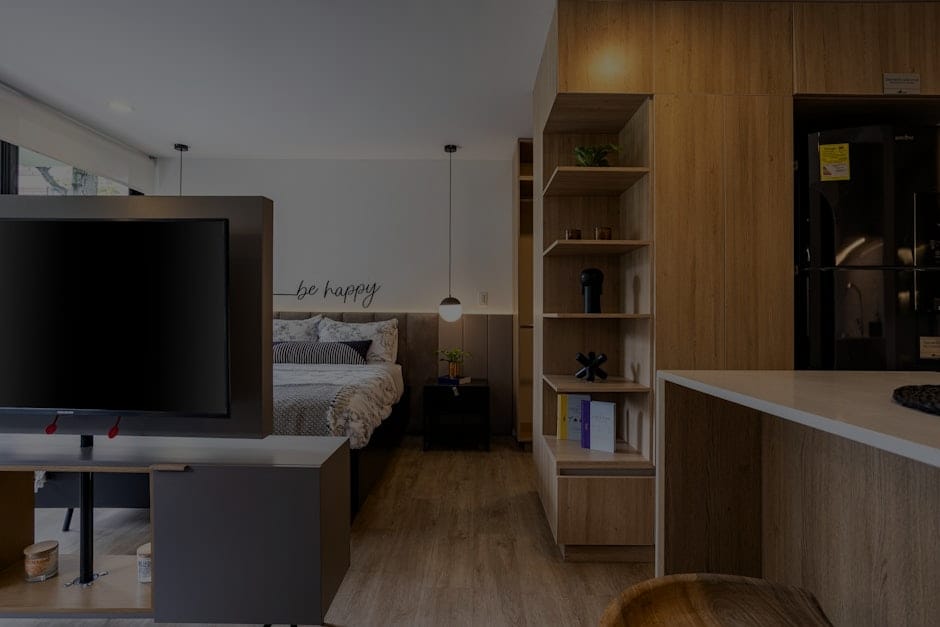**Abstract:** Discover how to transform your small living space into a harmonious sanctuary with practical feng shui solutions designed to maximize comfort and functionality.
Understanding Feng Shui Principles
Feng shui, an ancient Chinese practice, emphasizes the importance of energy flow in our environments. In small living areas, the arrangement of furniture and decor can greatly impact the overall energy, or “chi,” of a space. By understanding the fundamental principles of feng shui, you can create a serene atmosphere that promotes relaxation and productivity. Key elements include the balance of yin and yang, the five elements (wood, fire, earth, metal, water), and the significance of colors and shapes. Each element plays a role in how we feel within our spaces, making it crucial to incorporate them thoughtfully.
Decluttering: The First Step to Serenity
Before implementing any feng shui solutions, decluttering your small living area is essential. Clutter not only occupies physical space but also blocks the flow of positive energy. Begin by assessing your belongings—keep only what you truly need or love. Donate or discard items that no longer serve you. This practice not only creates more space but also invites clarity and calmness into your environment. A decluttered space allows energy to circulate freely, enhancing the overall vibe of your home.
Furniture Arrangement: Creating Balance
The arrangement of furniture is a vital aspect of feng shui in small living areas. Avoid placing furniture in a way that obstructs pathways, as this can create feelings of confinement. Instead, opt for a layout that encourages movement and interaction. For example, placing a sofa against a wall can create a sense of safety while allowing for open space in the center. Additionally, consider multi-functional furniture that serves various purposes, such as a coffee table with storage or a bed with drawers underneath. This not only maximizes space but also maintains balance.
Color Choices: Setting the Mood
Colors play a significant role in feng shui and can influence our emotions and well-being. For small living areas, light and neutral colors can make spaces feel larger and more inviting. Soft whites, pale blues, and gentle greens promote tranquility, while warm colors like soft yellows and earthy tones can add warmth and comfort. When selecting colors, consider the natural light in your space and how different shades can enhance or diminish that light. By thoughtfully choosing your color palette, you can create a harmonious atmosphere that reflects your personal style.
Incorporating Natural Elements
Bringing nature indoors is a powerful feng shui solution for small living areas. Plants not only purify the air but also enhance the energy flow within your home. Choose low-maintenance plants such as succulents or snake plants, which thrive in various light conditions. Additionally, consider incorporating natural materials like wood, stone, or bamboo in your decor. These elements connect your living space to the earth, fostering a sense of calm and grounding. Natural textures can also add depth and interest to your small area without overwhelming it.
Personal Touches: Infusing Your Space with Intent
Finally, personal touches are crucial in making your small living area feel like home. Incorporate items that resonate with you, such as artwork, photographs, or meaningful decor. However, ensure that these items align with the principles of feng shui. For example, avoid cluttering surfaces with too many objects, as this can disrupt the flow of energy. Instead, curate a few meaningful pieces that reflect your personality and aspirations. This not only enhances the aesthetic appeal but also fosters a sense of belonging and comfort.
By implementing these feng shui solutions, you can maximize your small living area, creating a space that is not only functional but also deeply nourishing for your mind, body, and spirit. Embrace the journey of transformation, and watch as your home becomes a sanctuary of peace and positivity.










